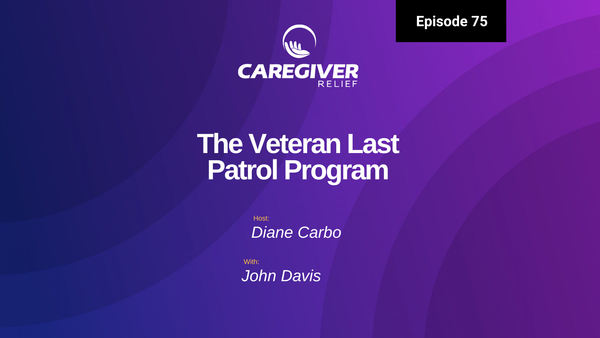Who Pays for Hospice Room and Board?

Introduction: Understanding Who Pays for Hospice Room and Board
When a loved one is facing a terminal illness, the last thing you want to think about is money. However, it is important to understand who pays for hospice room and board so you can provide the best care possible. Hospice care is expensive, and it is beneficial to have an idea of where to look for financial assistance before you are overwhelmed with medical bills. In this guide, we will explore the different ways people may pay for hospice care.
Medicare and Medicaid are two common programs that offer financial assistance for hospice care. Depending on your circumstances, private insurance policies and veteran benefits may also contribute. Charities and non-profit organizations may be able to help, and families can consider fundraising initiatives or tax deductions to cover costs. Financial planning resources are available to assist in finding the best options.
It can be daunting to think about the financial strain of hospice care, but there are many ways to help manage the cost. Keep reading to learn more about who pays for hospice room and board.
Medicare Coverage for Hospice Room and Board
When someone has been diagnosed with a terminal illness, hospice care provides relief from physical pain and emotional support for the patient and their family. Medicare is one program that may be able to provide coverage for hospice room and board.
Medicare Part A covers most costs associated with hospice care, including room and board. For people who qualify for this level of coverage, it can be very helpful in relieving the financial burden associated with hospice care. Additionally, some states have Medicaid programs that may be able to provide additional coverage for qualified individuals.
Medicare coverage for hospice care is limited to individuals who meet certain criteria. To be eligible for Medicare coverage, a person must be 65 or older, have permanent residence in the United States, and have been enrolled in Medicare Part A for at least 12 months. If an individual meets these requirements and has been diagnosed with a terminal illness, they will likely be eligible for Medicare coverage of hospice care.
Medicaid Programs and Hospice Care
When it comes to paying for hospice room and board, Medicaid can be a valuable resource. While the program is administered at the state level, many of them share similar coverage details for hospice care.
Medicaid may provide payment for some or all of the costs associated with the accommodation of a hospice patient. This includes in-patient hospice stays in hospitals or nursing facilities. The program may also provide coverage for home-based hospice, which includes the cost of necessary medical equipment and supplies.
In some cases, Medicaid will also cover the cost of a caregiver, should one be needed. This can be beneficial for families who are otherwise unable to provide care on their own. The amount of coverage will vary from case to case, depending on the individual’s needs.
Finally, it’s important to note that Medicaid programs are subject to change over time, so it’s essential to stay up-to-date with any new rules or regulations that may impact coverage.
When it comes to hospice care, the home is often the preferred environment. For many people, staying in the comfort and familiarity of their own home provides great peace of mind. However, when opting for home-based hospice care, there are various circumstances that need to be taken into account.
Understandably, there are additional costs associated with home-based care. Depending on the level of care required, these costs can range from equipment, medication and supplies to staffing and additional home modifications. These costs should be taken into consideration when deciding who will pay for the room and board associated with hospice care.
Many insurance providers can cover some of the costs of home-based hospice care, but it's important to do your research and understand exactly what is and isn't covered. Medicare and Medicaid are two common options that may be able to provide coverage in certain situations. It is also worth contacting private insurance providers to see if they provide any hospice care coverage.
For those who are unable to get sufficient coverage through insurance or other financial assistance programs, there are a few other options to consider. Some non-profit and charity organizations can provide assistance and may be able to help with the cost of hospice room and board, so it's always worth enquiring. Finally, there are a number of tax deductions related to home-based care that could potentially offset some of the associated costs.
Ultimately, understanding the costs and resources available is essential to making sure that you are best equipped to pay for hospice room and board. Doing your research and having an open discussion with your healthcare provider and insurance provider will help you to make the right decision for you or your loved one.
Veterans Administration Benefits for Hospice Room and Board
The Veterans Administration (VA) is committed to providing compassionate end-of-life care to veterans and their families. VA benefits are available to veterans and their surviving spouses who have a service-connected disability, or who have evidence of financial need.
For veterans with service-connected disabilities, the VA will cover 100% of hospice room and board costs for those admitted to a nursing facility.
Veterans with financial need may also qualify for some coverage. The VA will cover up to $90 per day for room and board costs in a skilled nursing facility, assuming the veteran meets certain eligibility criteria.
Veterans who opt for home-based care may also receive some coverage. The VA will cover up to $90 per day for non-institutional hospice care for veterans who meet the necessary qualifications.
In addition, the VA provides a variety of other services to help veterans and their families during the course of hospice care, such as counseling, respite care, comfort items, durable medical equipment, and transportation.
Examining Private Insurance Policies
Private health insurance is a great resource that can help cover the cost of hospice care. This section will look at how specific private insurance policies may cover hospice care costs, such as room and board.
First, it’s important to understand what kinds of services are covered by private health insurance. Generally, private insurance plans will cover visits to hospice care homes, medicines, medical supplies, and other treatments related to the patient's terminal illness or condition. It's important to know which things are considered “standard” coverage and which items are considered supplemental.
If a private health insurance policy covers room and board for hospice care, the policy should specify how much of the cost will be covered. Often times, private insurance only covers a certain amount of the cost, such as up to 80% or 90%. It’s important to read the details of the policy closely so that you understand the extent of coverage offered.
It’s also important to note that private health insurance policies may have specific conditions that must be met for coverage to be extended. For example, some policies may require pre-authorization from the primary care physician before a claim can be made. Check with your provider to make sure that all pre-requisites are met.
Additionally, there may be other costs associated with hospice care that are not covered under a private insurance policy. These costs may include any personal care items that are needed, such as toiletries or clothing. It’s important to ask your hospice care provider about any additional costs that may not be covered.
Motivation to Engage in Financial Planning and Available Options
It can be difficult to plan for the cost of hospice care, especially when a loved one is in need. It is important to take the time to explore all the available options so that you can make an informed decision. There are several different financing options you can explore depending on your situation.
One option is to use private insurance policies as they may provide some coverage for hospice care. Depending on the policy, they may cover certain costs like medications, supplies, and services. It is important to speak with a representative from your insurance provider and find out what is covered and what is not.
Another option is to look into Veterans Administration benefits. All veterans are eligible for hospice care through the VA, and there are special programs available for those who have served in the military related to paying for hospice care. Additionally, the VA may provide financial assistance to spouses or dependents of veterans.
You may also want to consider applying for Medicaid programs. Many states provide assistance for those in need of hospice care. These programs may cover room and board, medical care, and other costs associated with hospice care. It is important to review the requirements and applications to determine if you are eligible for assistance.
For those who are unable to receive coverage from any of the above sources, it is important to enter into financial planning. There are non-profit organizations and charities that may be able to provide assistance to families in need. Additionally, there may be tax deductions available to offset the cost of care. Lastly, families may engage in fundraisers or crowdfunding efforts to help cover the cost of hospice care.
When you are looking for help with paying for hospice room and board, charities and non-profit organizations can often be of assistance. These organizations exist to alleviate some of the costs associated with healthcare in order to make care accessible and affordable for those who need it.
Charities may provide financial assistance or grants, so it’s worth researching organizations that are active in your community. Organizations like the National Hospice Foundation and The Leukemia & Lymphoma Society offer specific grants and assistance to people receiving hospice care. If financially applicable, you may also be able to take advantage of assistance from Care Credit or programs that can provide interest-free loans.
Also, many local or county-specific non-profit agencies provide additional support, whether through material donations, volunteers, or financial assistance. It’s worth doing research into your area and seeing what is available – you may find an organization that is keen to help you on your journey.
If you are unsure of how to navigate the world of non-profits, there are resources available to help you find and select an organization that meets your needs. Websites like Charity Navigator can provide guidance and reviews on organizations so you can make an educated decision about where your money goes.
Fundraising Initiatives for Families
Families caring for a loved one in hospice care often find themselves in need of financial assistance. While Medicare, Medicaid, Veterans' Administration, or private insurance policies may cover some or all of the costs of hospice care, there are still room and board expenses that families may have to pay. To help offset these costs, families can consider fundraising initiatives.
Some options families can explore include:
- Applying for online crowdfunding campaigns to help raise funds.
- Organizing local charitable events with a goal of raising funds.
- Reaching out to friends, family, and members of their community to ask for donations.
- Asking their place of worship for help in paying for hospice room and board.
These initiatives can serve as a valuable resource in times of need. Furthermore, fundraising initiatives are not limited to just these suggestions. There are countless ways to help draw attention to a cause and seek out financial contributions. The important thing is to choose strategies that are comfortable and make sense for a particular situation.
Tax Deductions for Hospice Care
It is important to bear in mind that there are potential tax deductions associated with hospice care. While the specifics of each deduction may vary depending on the individual’s situation, there are some general pieces of information that can be useful to consider.
For instance, the IRS generally allows for medical and dental expenses that exceed 10% of a person’s adjusted gross income to be deducted from their taxable earnings. This may include costs related to hospice care such as medications, supplies, equipment, and room and board costs. Additionally, certain medical expenses related to home modifications may be deductible.
Families should also keep in mind that they may be able to deduct end-of-life planning expenses as well. These may include the cost of creating legal documents such as a will or living trust, as well as any fees associated with executing those documents.
Finally, it is important to note that any charitable contributions made to a qualified hospice organization are also eligible for a possible deduction. However, it is always a good idea to consult with a tax professional prior to taking any deductions to ensure accuracy and compliance.
Outlining Resources Available for Planning
When it comes to covering the cost of hospice room and board, one of the best resources you can turn to is the Medicare Cost Report. This document outlines what services and expenses are covered by Medicare for hospice care recipients. It also provides a detailed breakdown of which services are covered and any limits that might be imposed on certain items.
The cost report also provides detailed information about individual costs related to hospice care, as well as additional expenses that may not be covered. This information is vital in understanding the full scope of costs associated with hospice care, and can provide insight into what financial plans need to be made to cover the remaining costs.
In addition to the Medicare Cost Report, there are other resources available for planning purposes. These include government websites that provide information on Medicaid programs and Veterans Administration benefits, as well as private insurance policies that may partially or fully cover hospice care. Organizations such as charities and non-profit organizations may also be able to provide assistance with paying for hospice room and board.
The journey to understanding who pays for hospice room and board can be a daunting one. This guide is here to help make it less confusing and more manageable.
FAQ: Who Pays for Hospice Room and Board?
Does Medicaid cover hospice room and board?
Medicaid generally covers hospice services but does not typically pay for room and board at a hospice facility. Coverage can vary by state, so it's important to check with your local Medicaid office.
Does Medicare cover hospice room and board?
Medicare covers hospice care for terminally ill patients but does not usually cover room and board at a hospice facility. Medicare may cover inpatient respite care or short-term inpatient care when needed.
What hospice services are covered by Medicare and Medicaid?
Both Medicare and Medicaid cover a range of hospice services, including care from a hospice physician, nursing care, medical equipment, supplies, medications for symptom control and pain relief, and counseling services.
What is the hospice benefit under Medicare? A4: The hospice benefit under Medicare provides comprehensive care for terminally ill patients, including medical, emotional, and spiritual support. This benefit focuses on comfort rather than curative treatment and includes services such as nursing care, pain management, and family support.
What Medicaid services are available for terminally ill patients?
For terminally ill patients, Medicaid covers various hospice services such as medical care, pain management, counseling, and support for family members. However, room and board at a hospice facility are typically not included.
What is inpatient respite care, and is it covered?
Inpatient respite care provides temporary relief for primary caregivers by admitting the terminally ill patient to a hospice facility for a short period. Medicare covers inpatient respite care for up to five consecutive days at a time.
How does Medicaid coverage differ from Medicare for hospice care?
While both Medicaid and Medicare cover essential hospice services, their coverage for room and board differs. Medicaid generally does not cover room and board except under specific state programs, while Medicare only covers these costs in limited situations, such as inpatient respite care.
Can a hospice physician provide services under both Medicare and Medicaid?
Yes, hospice physicians can provide services to patients under both Medicare and Medicaid hospice benefits, ensuring that patients receive comprehensive medical care tailored to their needs.
Are there any circumstances where room and board at a hospice facility are covered?
Room and board at a hospice facility may be covered in certain circumstances, such as inpatient respite care under Medicare or specific state Medicaid programs that offer additional benefits. It's crucial to review your specific plan details and consult with your hospice provider.
Feel free to reach out to your hospice care provider or local Medicaid/Medicare office for more detailed information regarding your specific coverage options.
You might also like this article:










